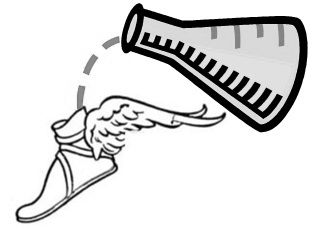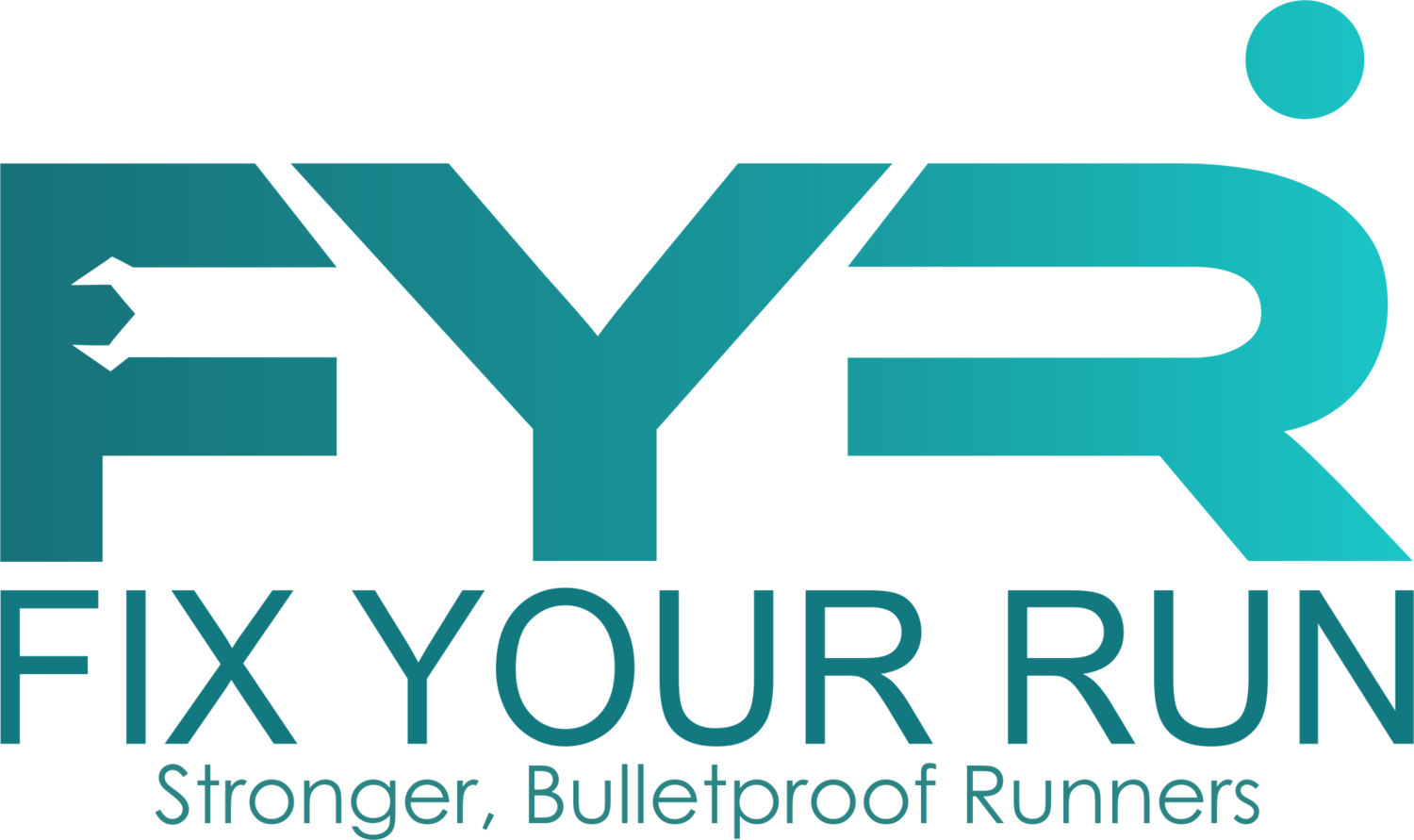Sprinting puts a ton of stress on the body and unless you're prepared to absorb and distribute those forces appropriately, it's like playing with fire. Before you even think about starting a sprinting routine, address your soft tissue quality and joint mobility every day for a month.
STOP Guessing About Your Training Paces
 Here’s the bottom line. Training smart trumps training stupid. Obviously. Yet, the biggest mistake made over and over again is training at the wrong pace given one’s current fitness.
Here’s the bottom line. Training smart trumps training stupid. Obviously. Yet, the biggest mistake made over and over again is training at the wrong pace given one’s current fitness.
A perfect example is someone who races a 5K at 8 minutes/mile and trains at a nearly similar pace all week. No wonder they a) probably hate running and b) aren’t making any progress.
Proper training means training at a wide variety of paces, but mostly easy.
If you’re running a few seconds per mile slower than your 5K pace, that’s NOT easy. 1:30-2:00min/mile slower than 5K pace is more like it.
There are a few ways to determine your correct training paces, but one of the best (and simplest) is an all-out effort over a measured course or track.
For the motivation alone it’s hard to beat the atmosphere of a race, but let’s face it, sometimes races are just inconvenient and expensive.
Enter the time trial – a low key, inexpensive way to assess your current fitness accurately.
Remember, to get to Point B, you must establish Point A.
Attempting to just wing it and train ‘intuitively’ doesn’t work – unless you’ve got years and years of experience. Why waste your time and effort?
Join Us!
Oh hey – this Thursday night (3/14) at Run Club we will run a 1 mile time trial. Either meet at lululemon at 6pm sharp or at Penn Park at 6:15pm.
You get all the benefits of a time trial – establishing your point A and learning how to pace yourself – plus a positive group atmosphere which will help your motivation to push yourself. And let me re-iterate that you MUST push yourself hard for this to work.
Best part is that everyone who shows up will have they’re unique training paces emailed to them after the run. NO MORE GUESSING!
See you there?
Guilt Free Cake? It is possible.
The Cause of Your Tight Muscles pt.3
The Cause of Your Tight Muscles pt. 2
The Cause of Your Tight Muscles pt. 1
Pelvic Unleveling?? Yikes!
Why One Should Not Run in Minimalist Shoes
One Sided Injuries
How Much Should You Exercise?
Drugs are prescribed with the “minimum effective dose” in mind. What is the least amount of drug that needs to be taken to have the desired effect? 2000mg of aspirin would definitely dull your pain, but maybe 200mg would give you the same relief with less chance of, uh, liver toxicity. What is the least amount of exercise needed to give you the result you want?
Caught in the Training Whirlpool?
Racing In The Moment
Your Race, Up In Flames
An Experiment of One
 It has often been said that we are each an “experiment of one”. Quite simply, we each have to discover what works for us as an individual.
A well thought out fitness plan may bring incredible results to one person, yet mediocre results to the next.
It has often been said that we are each an “experiment of one”. Quite simply, we each have to discover what works for us as an individual.
A well thought out fitness plan may bring incredible results to one person, yet mediocre results to the next.
If you're the one getting lousy results, do you just throw in the towel and say 'training doesn't work for me'? Of course not. You try something else until you figure out what works for you. PS: a coach can usually help this process move along much more quickly. Contact me if you're stuck!
When you're the one achieving great things it can be easy to assume that what you're doing should work for everyone. How many times have you heard someone say, “oh, yeah, as soon as I started doing [Crossfit, Zumba, yoga, long runs, speedwork, etc], I got WAY better. You should try it!”?
Take that sort of advice with a grain of salt. As a species we're pretty similar. But as individuals we've got enough differences that matter. Here are a few:
- Height
- Weight
- Age
- Gender
- Fundamental movement patterns
- Body awareness and coordination
- Training history and experience
- Current fitness level
- Basic strength levels
- Basic endurance levels
- Fast twitch muscle dominant (performs better, the shorter the event)
- Slow twitch muscle dominant (performs better, the longer the event)
- How you eat
- How you sleep
- Stress levels
I guess I could keep 'em coming, but you get the idea. To optimize your training, you've got to take all of those variables into account.
Maybe there's a nugget in the frustrating experience I had 2 weeks ago that will help you.
I was training like mad for the upcoming New York City Marathon, yet my times were actually getting slower. My easy run pace had eroded by close to 30 seconds per mile and I didn't need a race to tell me it wasn't a good sign!
Tapping into my experience and expertise, I questioned everything. Although I was training more – more miles and more cycling minutes – I was lacking speed training thanks to an annoying calf muscle that got angry with fast running. And due to the increase in mileage, I'd gradually allowed heavy strength training to fall by the wayside.
Sprinting and heavy lifts. Two things that have been proven to work – for me. They amp up my nervous system which allows my brain to recruit more muscle fibers for running. This gives me more power in my stride and delays fatigue, a pretty nice combo!
Fortunately, acupuncture and bodywork by the knowledgeable Chad Bong released the trigger points in my calf causing pain in my foot. I can finally do some faster running and not limp home afterwards!
So I put my theory to the test. I incorporated a small amount of fast running over the course of 3 sessions and did a few heavy lifts. What's heavy? A weight you can lift 3-5 times will do. I deliberately held back so as to not be an idiot and get hurt. (This is NOT a strategy I would recommend for everyone.) Remember the theme of this post. I had the experience and knew the risks.
Less than 10 days after my first attempt at speed all of my running paces had improved significantly. The nervous system wakes up and adapts quickly whereas aerobic adaptations take much longer. If I was actually out of shape aerobically, there's no way I'd see such rapid improvement.
As I type this (15 days later), I'm happy to report the MOJO is fully BACK! Whew!
When it comes to training, what have you noticed really works for YOU?
5 Quick Tips for a Successful First 5K
The Perilous First Six Months
Coconut Water Is Not a Special Sports Drink
Single Leg Solutions
A Long Stride Is Good, Right?
The Marching Bridge Exercise
I've recently written about how weak glutes can undermine and eventually derail your training. After working with hundreds of clients over the past 12 years I can say one thing with certainty. Weak butt muscles are an epidemic and, more than likely, you've got some work to do, too. Again, if you've got weak glutes it's not a matter of IF you will get a running injury, but WHEN. The Marching Bridge a simple and effective exercise to build up that critical muscle group.
